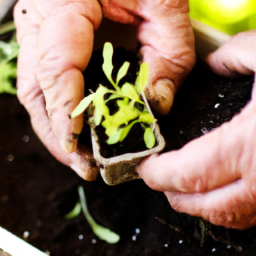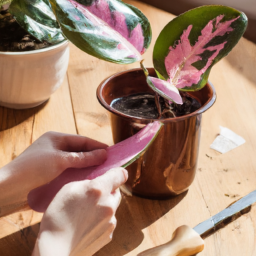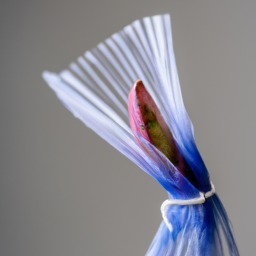
Advanced Propagation Techniques: Grafting and Air Layering
Welcome to our blog post on advanced propagation techniques, specifically focusing on grafting and air layering. If you are an avid gardener or plant enthusiast looking to expand your knowledge and skills in plant propagation, then you have come to the right place. In this article, we will delve into the fascinating world of grafting and air layering, exploring their benefits, methods, and tips for success. Whether you are interested in creating new plant varieties, rejuvenating old or diseased plants, or simply experimenting with different propagation methods, understanding grafting and air layering can significantly enhance your gardening repertoire. So, let’s dive in and discover the wonders of these advanced propagation techniques.
Benefits of Advanced Propagation Techniques: Grafting and Air Layering
Grafting and air layering are advanced propagation techniques that allow gardeners and horticulturists to reproduce plants with desirable traits and characteristics. These techniques are widely used in the horticultural industry to propagate plants that are difficult to grow from seeds or cuttings. In this article, we will explore the benefits of these advanced propagation techniques and provide a step-by-step guide on how to perform grafting and air layering.
Grafting
Grafting is a technique where two different plant parts are joined together to create a new plant. The upper part of the plant, known as the scion, is selected for its desired traits such as fruit quality or flower color. The lower part, called the rootstock, provides the plant with a strong and vigorous root system. Grafting allows gardeners to combine the best characteristics of two different plants into one, resulting in improved overall plant performance.
One of the main benefits of grafting is that it enables the propagation of plants that are difficult to grow from seeds or cuttings. Some plants have seeds that are hard to germinate or cuttings that are challenging to root. By grafting, these plants can be propagated more easily and efficiently. Additionally, grafting allows for the production of true-to-type plants, meaning that the new plants will have the same characteristics as the parent plant.
Grafted plants also have improved disease resistance and tolerance to environmental stresses. The rootstock used in grafting can confer resistance to soil-borne diseases and pests, which can help increase the overall health and productivity of the plant. Furthermore, grafting allows for the production of plants that are better adapted to specific environmental conditions, such as drought or high salinity.
Air Layering
Air layering is another advanced propagation technique that involves inducing roots to form on a stem while it is still attached to the parent plant. This method is particularly useful for plants that are difficult to propagate by other means, such as woody plants with hard-to-root cuttings. Air layering allows gardeners to clone plants with desirable traits without having to rely on seeds or cuttings.
One of the main advantages of air layering is that it allows for the production of larger plants in a shorter period of time. When a stem is air layered, the roots that form are already well-developed, which means that the resulting plant will establish more quickly once it is transplanted. This is especially beneficial for fruit trees and ornamental plants that take a long time to reach maturity.
Another benefit of air layering is that it allows for the propagation of plants that do not root easily from cuttings. Some plants have a low success rate when it comes to rooting cuttings, but air layering provides a more reliable method of propagation. This technique is also useful for plants that are difficult to divide or separate, as it allows for the production of new plants without damaging the parent plant.
Step-by-Step Guide: Grafting and Air Layering
Grafting:
1. Select a healthy scion and rootstock. The scion should have desirable traits, while the rootstock should have a strong root system.
2. Make a diagonal cut on the scion and a corresponding cut on the rootstock.
3. Join the two cut surfaces together, making sure that the cambium layers align.
4. Secure the graft union with grafting tape or a grafting clip.
5. Keep the grafted plant in a warm and humid environment until the graft union heals.
6. Once the graft union has healed, the grafted plant can be transplanted into a larger container or directly into the ground.
Air Layering:
1. Select a healthy stem on the parent plant. The stem should be flexible and about pencil thickness.
2. Make a small incision on the stem, approximately 1/3 of the way through the diameter.
3. Apply a rooting hormone to the incision to promote root development.
4. Wrap the incision with moist sphagnum moss or a rooting medium, and cover it with plastic wrap to create a mini greenhouse.
5. Secure the moss and plastic wrap in place with twine or a rubber band.
6. Keep the air layering setup in a warm and humid environment, ensuring that the moss remains moist.
7. After a few weeks or months, roots will start to form on the stem. Once the roots are well-developed, cut the stem below the air layer and transplant the new plant into a container or directly into the ground.
In conclusion, grafting and air layering are advanced propagation techniques that offer numerous benefits to gardeners and horticulturists. These techniques allow for the production of plants with desirable traits, improved disease resistance, and faster establishment. By following the step-by-step guide provided, you can successfully perform grafting and air layering to propagate your favorite plants and enhance your gardening skills.
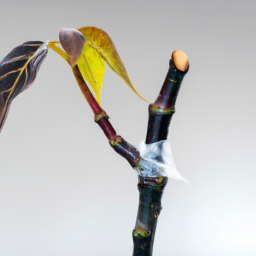
Step-by-Step Guide to Grafting and Air Layering
Grafting
Grafting is a fascinating technique used by horticulturists and gardeners to combine the desirable traits of two different plants. It allows us to propagate plants that may not be easily grown from seeds or cuttings, and it also enables us to create unique and beautiful hybrids. In this step-by-step guide, we will explore the art of grafting and learn how to successfully graft plants.
Step 1: Selecting the Rootstock and Scion
The first step in grafting is to select the rootstock and scion. The rootstock is the plant onto which the scion will be grafted. It is important to choose a rootstock that is compatible with the scion, meaning they are of the same or closely related plant species. The rootstock should also have desirable traits such as disease resistance or vigorous growth.
The scion is the plant that will be grafted onto the rootstock. It is usually a desired cultivar or variety that possesses the traits we want to propagate. Select a healthy scion with strong growth and disease-free foliage.
Step 2: Preparing the Rootstock and Scion
Before grafting, it is crucial to prepare both the rootstock and scion properly. Start by making a clean, slanted cut on the rootstock, about 1-2 inches above the ground. The cut should be smooth and even to ensure a good union between the rootstock and scion.
Next, prepare the scion by making a similar slanted cut at the bottom, creating a matching angle to fit the rootstock. The cut should be made just below a bud or node. It is essential to ensure that both the rootstock and scion cuts are clean and precise for a successful graft.
Step 3: Joining the Rootstock and Scion
Now comes the exciting part of joining the rootstock and scion together. Carefully align the cambium layers of the rootstock and scion, ensuring that they match as closely as possible. The cambium layer is the thin, green layer just beneath the bark, responsible for the transport of water and nutrients.
Place the scion onto the rootstock, making sure the cuts on both pieces fit together snugly. Use grafting tape or a grafting clip to hold the two parts firmly in place. It is crucial to protect the graft union from drying out, so cover it with grafting wax or grafting compound to seal and protect the exposed surfaces.
Step 4: Caring for the Grafted Plant
After grafting, it is essential to provide proper care to ensure the success of the graft. Keep the grafted plant in a warm and humid environment to promote healing and prevent dehydration. You can use a plastic bag or a humidity dome to create a mini greenhouse effect.
Monitor the graft union regularly for any signs of infection or failure. If you notice any issues, such as wilting or discoloration, take immediate action to address the problem. Water the plant regularly, but avoid overwatering, as it may lead to rotting or fungal diseases.
Step 5: Gradual Transition and Maintenance
Once the graft has successfully taken and the plant starts to show new growth, it is time to gradually transition it to its permanent location. Begin by exposing the grafted plant to slightly cooler temperatures and lower humidity levels over a period of several weeks.
Continue to monitor the grafted plant’s progress and provide regular care, including proper watering, fertilization, and pest control. Prune any unwanted shoots that emerge from the rootstock to ensure the energy is directed towards the scion.
Air Layering
Air layering is another advanced propagation technique used to reproduce plants with desirable traits. It involves creating a new plant by inducing roots to form on a stem while it is still attached to the parent plant. This method is particularly useful for plants that are difficult to propagate by other means, such as woody plants with hard-to-root stems. Let’s explore the step-by-step process of air layering.
Step 1: Selecting the Parent Plant
The first step in air layering is to select a healthy and mature parent plant. Choose a plant that has a flexible stem and is in its active growth phase. It is essential to ensure that the parent plant is well-nourished and free from any diseases or pests.
Step 2: Preparing the Stem
Identify a suitable section of the stem for air layering. Make a clean, horizontal cut around the stem, removing a small ring of bark and cambium layer. The cut should be approximately 1/4 to 1/2 inch wide, depending on the size of the stem.
Step 3: Applying Rooting Hormone and Moisture
Apply a rooting hormone to the exposed area of the stem to promote root development. This hormone stimulates the growth of new roots. After applying the rooting hormone, wrap the area with moist sphagnum moss or a similar moist medium. This will provide the necessary moisture and nutrients for root formation.
Step 4: Enclosing and Protecting the Air Layer
Enclose the moist moss or medium with a plastic wrap or a sheet of clear plastic. Ensure that the wrapping is tight and secure to maintain a moist environment around the air layer. You can use twist ties or rubber bands to hold the plastic in place.
It is important to check the air layer regularly and ensure that the moss remains moist. If necessary, mist the moss with water to maintain the desired moisture level. Avoid overwatering, as it may lead to rotting or fungal diseases.
Step 5: Root Formation and Separation
Over time, the stem will develop roots within the enclosed air layer. This process may take several weeks to several months, depending on the plant species and environmental conditions. Once a sufficient number of roots have formed, carefully remove the plastic wrapping and moss.
Make a clean cut just below the air layer, severing the newly formed roots from the parent plant. Transplant the air layer into a suitable pot or planting location, ensuring that the roots are covered with soil and the plant is well-supported.
Step 6: Caring for the Newly Propagated Plant
After separation, the newly propagated plant requires proper care to establish itself. Place it in a location with bright, indirect light and maintain a consistent watering schedule. Protect the young plant from extreme temperatures and harsh weather conditions.
Monitor the plant for any signs of stress or disease and take appropriate action if necessary. As the plant grows, provide regular maintenance such as pruning, fertilization, and pest control to promote healthy growth and development.
By following these step-by-step instructions for grafting and air layering, you can explore the world of advanced propagation techniques and create unique and beautiful plants. Remember, practice and patience are key to mastering these techniques, so don’t be discouraged if your first attempts are not successful. Happy propagating!
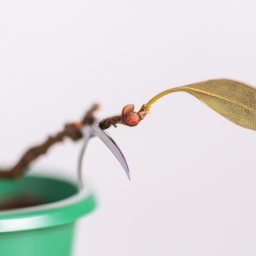
Common Plants Suitable for Advanced Propagation Techniques
Grafting
Grafting is an advanced propagation technique that allows you to combine the desirable traits of two different plants into one. It involves joining the stem or bud of one plant, known as the scion, with the root system of another plant, known as the rootstock. This technique is commonly used to propagate fruit trees, roses, and ornamental plants. Let’s explore some common plants that are suitable for grafting.
1. Apple Trees (Malus domestica)
Apple trees are popular choices for grafting due to their wide variety of cultivars and their compatibility with different rootstocks. You can graft different apple varieties onto a rootstock to create a tree that produces multiple types of apples. This allows you to enjoy a diverse range of flavors and textures from a single tree.
2. Citrus Trees (Citrus spp.)
Citrus trees, including oranges, lemons, and grapefruits, are also excellent candidates for grafting. They are often grafted onto rootstocks that provide resistance to soil-borne diseases and improve overall tree vigor. Grafting allows you to combine different citrus varieties, creating trees that produce multiple types of fruits with varying flavors and ripening times.
3. Roses (Rosa spp.)
Roses are commonly propagated through grafting to preserve the unique characteristics of a specific rose variety. By grafting a scion from a desired rose cultivar onto a rootstock, you can ensure that the new plant retains the same flower color, fragrance, and growth habit as the parent plant. Grafted roses also tend to have stronger root systems, resulting in healthier and more vigorous plants.
Air Layering
Air layering is another advanced propagation technique that involves creating roots on a stem while it is still attached to the parent plant. This method is particularly useful for plants that are difficult to propagate through other means, such as cuttings or seeds. Here are some common plants that are suitable for air layering.
1. Ficus Trees (Ficus spp.)
Ficus trees, including popular houseplants like the Ficus benjamina (Weeping Fig) and Ficus elastica (Rubber Tree), can be successfully propagated through air layering. This technique allows you to create new plants that are genetically identical to the parent plant, ensuring that they will have the same desirable traits and characteristics.
2. Magnolia Trees (Magnolia spp.)
Magnolia trees, known for their stunning flowers, can be propagated through air layering to produce new plants with identical characteristics. This method is particularly useful for preserving specific cultivars or rare varieties that are difficult to find through other propagation techniques.
3. Camellias (Camellia spp.)
Camellias, with their beautiful and long-lasting blooms, are often propagated through air layering to maintain the exact characteristics of the parent plant. By air layering, you can ensure that the new plants will have the same flower color, form, and size as the original plant.
In conclusion, grafting and air layering are advanced propagation techniques that offer exciting possibilities for plant enthusiasts. By grafting different plants together, you can create unique combinations of desirable traits, while air layering allows you to propagate plants that are difficult to reproduce through other methods. Whether you’re interested in creating multi-variety fruit trees or preserving rare plant cultivars, these techniques open up a world of possibilities for expanding your garden and enjoying a diverse range of plant species.
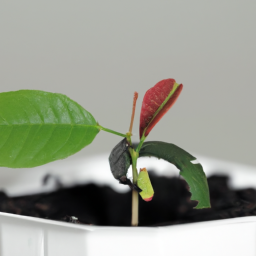
Troubleshooting Tips for Successful Grafting and Air Layering
Introduction
Propagation techniques like grafting and air layering can be incredibly rewarding for gardeners and plant enthusiasts. However, they can also be challenging, especially for beginners. In this article, we will explore some troubleshooting tips that can help you achieve success with these advanced propagation techniques. By understanding common issues and their solutions, you’ll be better equipped to overcome any obstacles and enjoy the satisfaction of successfully propagating your favorite plants.
1. Grafting
Grafting is a technique where you join two plant parts together to create a new plant with desirable characteristics. While it may seem complex, with careful attention to detail and some troubleshooting know-how, you can master this technique. Here are some troubleshooting tips for successful grafting:
1.1. Compatibility
One common issue in grafting is the lack of compatibility between the scion (the upper part of the graft) and the rootstock (the lower part). This can result in graft failure or weak growth. To ensure compatibility, it is crucial to select scions and rootstocks from the same plant species or closely related species. Research and choose compatible plant combinations to increase your chances of success.
1.2. Proper Alignment
Misalignment during grafting can prevent the successful union of the scion and rootstock. It is essential to make precise cuts and ensure the cambium layers of both parts align properly. The cambium layer is responsible for the growth of new cells and plays a vital role in graft union formation. Use a sharp knife and take your time to achieve a clean and accurate cut, ensuring the cambium layers are in contact for optimal healing and growth.
1.3. Graft Union Protection
Protecting the graft union is crucial for successful grafting. The graft union is a vulnerable area that needs to be shielded from external factors such as extreme temperatures, pests, and diseases. Apply grafting wax or a suitable grafting sealant to seal the graft union and prevent moisture loss. This protective layer acts as a barrier against pathogens and promotes healing. Regularly inspect the graft union and reapply the sealant if necessary.
2. Air Layering
Air layering is another advanced propagation technique that involves inducing roots to form on a stem while it is still attached to the parent plant. This method is particularly useful for plants that are difficult to propagate through other means, such as woody plants. Here are some troubleshooting tips for successful air layering:
2.1. Timing
Timing is crucial in air layering. It is best to perform air layering during the plant’s active growth period, typically in spring or early summer. Avoid performing air layering during periods of dormancy or when the plant is stressed. The plant’s ability to produce roots is highest when it is actively growing, increasing the chances of success.
2.2. Proper Wounding
Wounding the stem is an essential step in air layering, as it stimulates root formation. However, improper or excessive wounding can hinder the process. Make a clean, vertical cut through the bark, ensuring it penetrates the cambium layer without damaging the underlying wood. Gently remove the bark to expose the wound, promoting the development of adventitious roots.
2.3. Moisture Control
Maintaining proper moisture levels is critical for successful air layering. Excessive moisture can lead to rot, while inadequate moisture can hinder root development. Wrap the exposed wound with moist sphagnum moss or a suitable rooting medium, then cover it with plastic wrap to create a humid environment. Regularly check the moisture levels and mist the rooting medium if it becomes dry.
Conclusion
Mastering advanced propagation techniques like grafting and air layering requires practice, patience, and troubleshooting skills. By understanding the common issues and following the troubleshooting tips provided, you can increase your chances of success. Remember to choose compatible plant combinations, ensure proper alignment, protect the graft union, time your air layering correctly, make precise wounds, and maintain appropriate moisture levels. With these troubleshooting tips in mind, you’ll be well on your way to successfully propagating your favorite plants using grafting and air layering techniques.
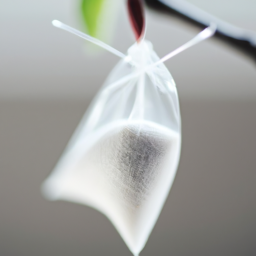
Comparing Grafting and Air Layering: Pros and Cons
Introduction
Propagation is a fascinating aspect of plant cultivation that allows us to create new plants from existing ones. Grafting and air layering are two advanced propagation techniques that have been practiced for centuries. While both methods are effective in producing new plants, they differ in their approach and have their own set of advantages and disadvantages. In this article, we will compare grafting and air layering, exploring their pros and cons to help you decide which technique suits your needs.
Grafting
Grafting is a technique that involves joining the tissues of two different plants to create a new plant with combined characteristics. It is commonly used in fruit tree propagation, allowing the production of trees with desirable traits such as disease resistance, improved fruit quality, or dwarfing characteristics. Here are the pros and cons of grafting:
Pros
1. Compatibility: Grafting allows the combination of different plant species or varieties that may not naturally crossbreed. This opens up a world of possibilities for creating unique and diverse plants.
2. Faster Results: Grafting can produce mature plants faster compared to other propagation methods. This is particularly advantageous when time is of the essence, such as in commercial fruit tree production.
3. Clonal Replication: Grafting allows for the exact replication of desirable traits from the parent plant. This ensures that the new plant will inherit the desired characteristics, such as fruit flavor, color, or disease resistance.
Cons
1. Skill and Knowledge Requirements: Grafting is a technique that requires practice and knowledge of plant anatomy. It may take time to master the skills necessary for successful grafting, especially for beginners.
2. Compatibility Issues: Not all plants are compatible for grafting. Some species or varieties may have incompatible tissues, leading to graft failure. It is important to research and understand the compatibility of plants before attempting grafting.
3. Vulnerability to Graft Union Failure: Grafted plants are susceptible to graft union failure, where the grafted tissues fail to fuse properly. This can occur due to various factors such as improper technique, environmental stress, or disease. Proper care and monitoring are essential to ensure graft success.
Air Layering
Air layering is a propagation technique that encourages the growth of roots on a stem while it is still attached to the parent plant. This method is commonly used for woody plants that are difficult to propagate through other means. Let’s explore the pros and cons of air layering:
Pros
1. Increased Success Rate: Air layering has a high success rate compared to other propagation methods. This is because the stem remains attached to the parent plant, allowing it to receive nutrients and moisture while roots develop.
2. Suitable for Difficult-to-Root Plants: Some plants, especially woody species, have a low success rate when propagated through cuttings or seeds. Air layering provides a reliable alternative for propagating these plants, ensuring a higher chance of success.
3. Larger and Established Plants: Air layering allows the production of larger plants compared to other propagation methods. This is because the new plant develops roots while still attached to the parent, resulting in a more established and mature plant upon separation.
Cons
1. Time-consuming Process: Air layering can be a time-consuming technique, as it requires patience and several months for roots to develop. This may not be suitable for those looking for quick propagation results.
2. Limited Quantity: Air layering is best suited for producing a small number of plants at a time. It may not be practical for large-scale propagation due to the time and effort required for each individual plant.
3. Risk of Damage to Parent Plant: The process of air layering involves cutting into the parent plant’s stem, which can potentially cause damage or weaken the plant. Care must be taken to minimize any harm to the parent plant during the process.
Conclusion
Grafting and air layering are both valuable techniques for advanced plant propagation. Grafting offers the advantage of compatibility, faster results, and clonal replication, but requires skill and may be prone to graft union failure. On the other hand, air layering boasts a higher success rate, suitability for difficult-to-root plants, and the production of larger, established plants, but is time-consuming and limited in quantity. Consider your specific needs and preferences when deciding which technique to employ. With practice and knowledge, both grafting and air layering can unlock a world of possibilities in creating unique and thriving plants.
Here’s what we learned
Grafting and air layering are advanced propagation techniques that allow gardeners and horticulturists to reproduce plants with desirable traits or to rejuvenate older plants. Grafting involves joining the tissues of two different plants to create a new plant with the combined characteristics of both. This technique is commonly used to propagate fruit trees and roses, as well as to repair damaged or diseased plants. On the other hand, air layering is a method that encourages the growth of roots on a stem while it is still attached to the parent plant. This technique is particularly useful for plants that are difficult to root from cuttings or have low success rates with other propagation methods.
Grafting is a versatile technique that allows gardeners to create hybrids, maintain unique varieties, or improve the overall health and vigor of plants. It involves carefully joining a scion (the desired plant part) with a rootstock (the plant that provides the root system) to ensure a successful union. The scion and rootstock must be compatible for the graft to be successful. Grafting can be done by various methods, including whip grafting, cleft grafting, and budding. Each method requires specific tools and techniques, but with practice, gardeners can master this technique and enjoy the benefits of creating unique plant combinations.
Air layering, on the other hand, is a propagation technique that encourages the growth of roots on a stem while it is still attached to the parent plant. This method is particularly useful for plants that are difficult to root from cuttings or have low success rates with other propagation methods. Air layering involves making a cut on a stem, applying rooting hormone, and then wrapping the cut area with moist sphagnum moss or another suitable medium. This encourages the growth of roots, which can then be separated from the parent plant and potted up as a new individual. Air layering is commonly used for plants like magnolias, citrus trees, and camellias, as well as for rejuvenating older plants that have become leggy or woody.
In conclusion, advanced propagation techniques such as grafting and air layering offer gardeners and horticulturists the opportunity to create new plant combinations, maintain unique varieties, and rejuvenate older plants. Grafting allows for the combination of desirable traits from different plants, while air layering provides an effective method for rooting plants that are otherwise difficult to propagate. With practice and patience, these techniques can be mastered, expanding the possibilities for plant propagation and enhancing the beauty and diversity of our gardens.
Let me leave you with some FAQs:
Q1: What is grafting and air layering?
A1: Grafting and air layering are advanced propagation techniques used in horticulture to reproduce plants. Grafting involves joining the tissues of two different plants, while air layering encourages roots to form on a stem while it is still attached to the parent plant.
Q2: What are the advantages of using grafting and air layering?
A2: Grafting allows the combination of desirable traits from two different plants, such as disease resistance and fruit quality. Air layering helps to propagate plants that are difficult to root from cuttings, ensuring a higher success rate.
Q3: When should I use grafting instead of air layering?
A3: Grafting is typically used when you want to combine the characteristics of two different plants, such as a specific rootstock with a desirable fruiting variety. It is also useful for repairing damaged plants or rejuvenating old ones.
Q4: When should I use air layering instead of grafting?
A4: Air layering is often preferred for plants that are difficult to propagate through other methods, such as cuttings. It is commonly used for plants with brittle stems, plants that do not root easily, or when you want to create a new plant while keeping the parent intact.
Q5: What plants can be propagated using grafting and air layering?
A5: Grafting and air layering can be used on a wide range of plants, including fruit trees, ornamental trees, shrubs, and woody vines. However, the success of these techniques may vary depending on the specific plant species.
Q6: What tools and materials do I need for grafting?
A6: For grafting, you will need a sharp grafting knife, grafting tape or rubber bands, grafting wax or sealant, and rootstock and scion wood. Additional tools like pruning shears and a budding knife may also be useful.
Q7: What tools and materials do I need for air layering?
A7: Air layering requires a sharp knife or pruning shears, rooting hormone, sphagnum moss, plastic wrap or a plastic bag, and twist ties or string to secure the moss and plastic.
Q8: How long does it take for grafting and air layering to be successful?
A8: The success of grafting and air layering depends on various factors, including the plant species, environmental conditions, and techniques used. In general, grafting can take a few weeks to several months for the graft union to fully heal and the plant to establish. Air layering may take a few weeks to a few months for roots to develop.
Q9: Can I graft or air layer plants at any time of the year?
A9: The best time for grafting and air layering varies depending on the plant species. In general, grafting is often done during late winter or early spring before new growth begins. Air layering is commonly performed during spring or early summer when the parent plant is actively growing.
Q10: Are grafting and air layering techniques difficult to learn?
A10: Grafting and air layering can be challenging techniques to master, especially for beginners. It requires a good understanding of plant anatomy, proper technique, and practice. However, with proper guidance and practice, these techniques can be learned and successfully applied by most gardeners and horticulturists.
Dr. Olivia Green is a botanist with over two decades of experience in indoor plant cultivation. She holds a Ph.D. in Plant Biology and has dedicated her career to researching plant behavior in controlled environments. Dr. Green is passionate about helping plant enthusiasts master the art of indoor gardening through her extensive knowledge and practical insights.

